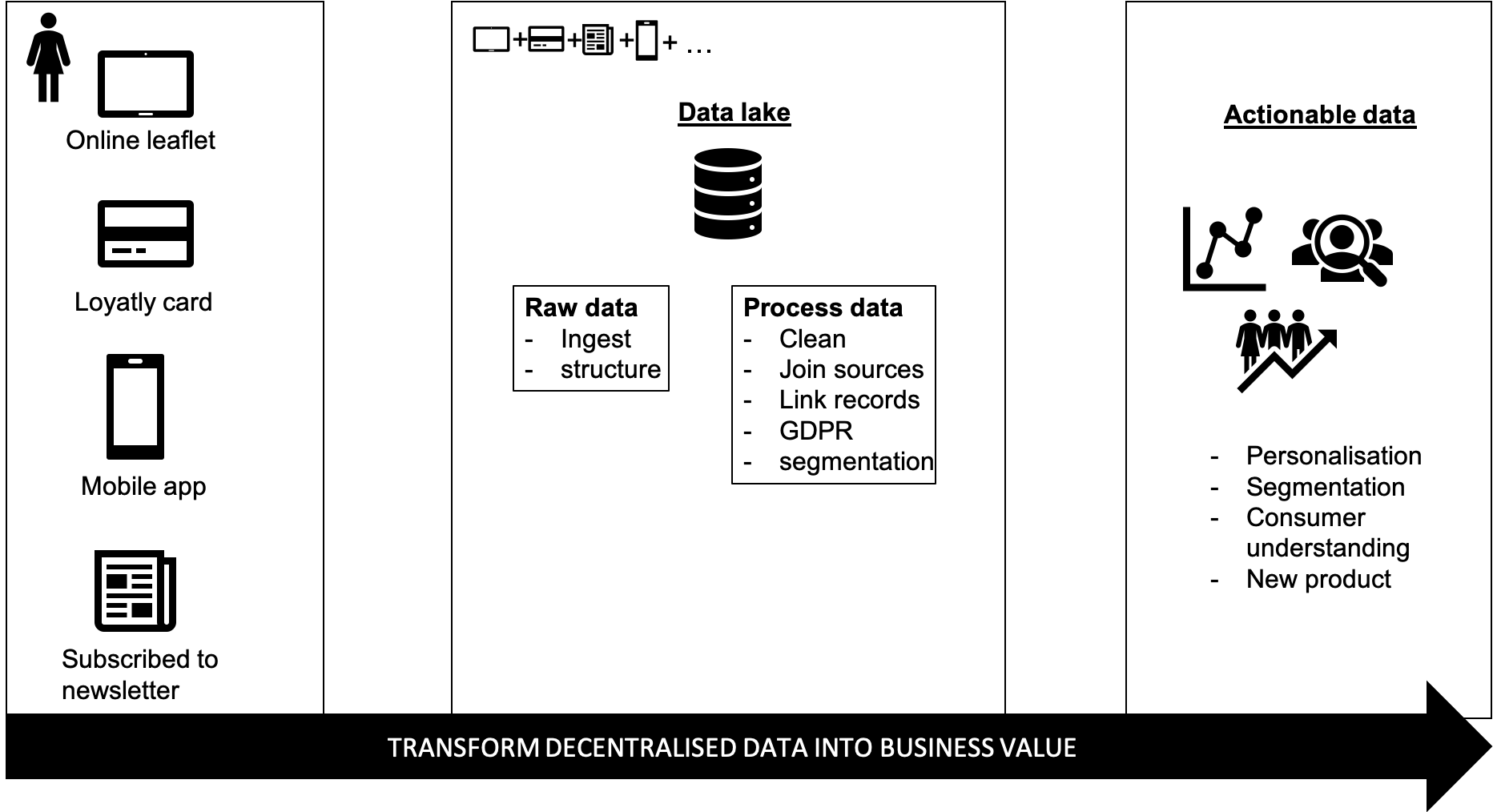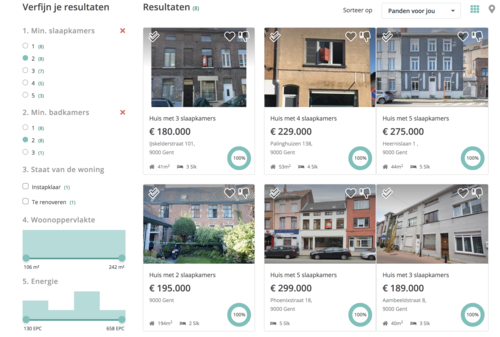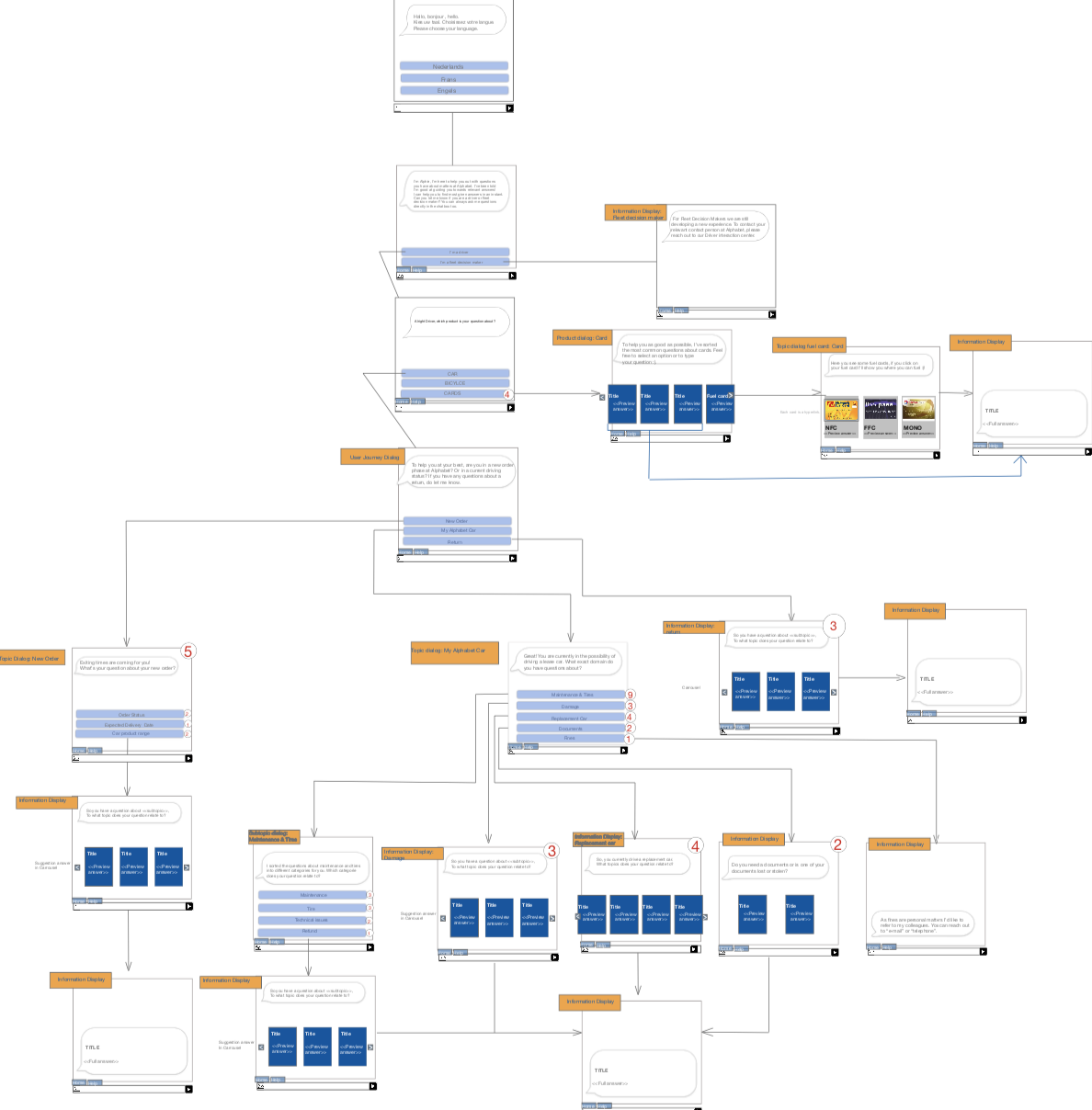Our client owns an omnichannel platform that reaches consumers through various offline and digital touchpoints. These touchpoints bring a lot of data with the potential to create value in terms of personalization, segmentation, and an overall deeper customer understanding. Yet, this data is spread over different sources and occurs in various formats, which makes it challenging to extract value from it.
The sum of the data sources is …
When consumer data lives in many different places (mobile leaflet, loyalty card, website,..) and occurs in many different formats (structured, unstructured, semi-structured), it’s often challenging to pick up fresh and actionable insights from it. In order to do so, we need to link and relate data so it can be enriched.
Let’s see how decentralized data occurs in daily life. Person x is interested in DIY and checks out the mobile leaflet (1) of “DIY store 1” in the mobile app. Meanwhile, the same person has a loyalty card (2) of “DIY store 2” and checks out promotions of “DIY store 3” on the website (3). Person x also subscribed to the newsletter (4) and clicks through on a promotion for lawn mowers.

Data lake: The data lives in one place
Pouring the raw data of the digital platforms into a data lake offers a great solution for many of the data challenges that occur in the journey we’ve just described:
-
It addresses the locality problem. The data lake offers a place where all the raw data is centralised. We don’t capture data in the data lake but copy all the raw data from the different data sources into it.
-
The possibility to mix all kinds of data in a single place at scale, independent from the structure or format of the data : e-mails, clicks in newsletters, visited pages on the website, application data and mobile data.
-
It’s a place where we can build a logic to correctly interpret the data. We can make in-depth analytics and reports to fill specific market and company needs.
We create segments by linking data from different sources and gain insight into customer behaviour. This leads to profiling and personalization, which enables us to answer important questions:
-
What is the reach for promotion x?
-
Which products are interesting for segment y?
-
What is the ideal promotion for people who are interested in product z?
-
Why do people with a loyalty card of store x buy product of store y?
These insights are used to support the customer experience by offering tailor-made shopping experience. A consumer will receive relevant promotions and interesting offerings. So what does these data insights mean for our friend, person x?
Person x who’s interested in DIY will now get to see promotions for lawn mowers instead of a general ad about the newest make-up trends. When registered he’ll also receive relevant newsletters to inform him about relevant promotions.
Got any questions about this solution? Ready to find out how we can work together? Let us know!







